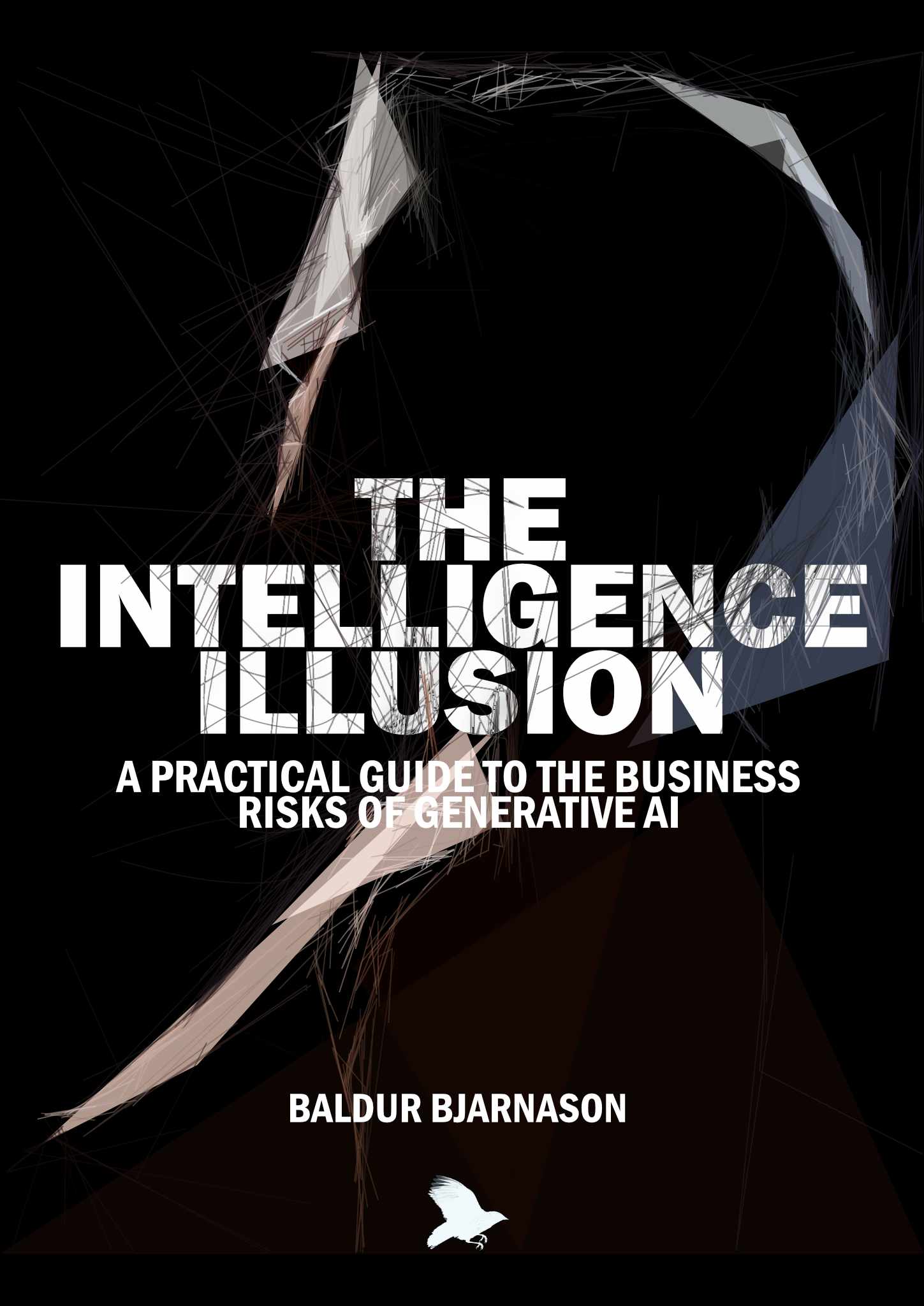Barr, Kyle.
“GPT-4 Is a
Giant Black Box and
Its Training Data
Remains a Mystery.”
Gizmodo, March 2023.
https://gizmodo.com/chatbot-gpt4-open-ai-ai-bing-microsoft-1850229989.
Bartal, Inbal Ben-Ami, Jean Decety, and Peggy Mason.
“Helping a Cagemate in Need: Empathy and Pro-Social Behavior
in Rats.” Science (New York, N.Y.) 334, no. 6061
(December 2011): 1427–30.
https://doi.org/10.1126/science.1210789.
Bekoff, Marc.
“Scientists Conclude
Nonhuman Animals Are
Conscious Beings: Didn’t We
Already Know This? Yes, We Did.” August 2012.
https://www.psychologytoday.com/us/blog/animal-emotions/201208/scientists-conclude-nonhuman-animals-are-conscious-beings.
Bender, Emily M., Timnit Gebru, Angelina McMillan-Major, and
Shmargaret Shmitchell.
“On the Dangers of
Stochastic Parrots: Can
Language Models Be
Too Big?” In
Proceedings of
the 2021 ACM Conference on
Fairness, Accountability, and
Transparency, 610–23.
FAccT ’21.
New York, NY, USA: Association for Computing Machinery, 2021.
https://doi.org/10.1145/3442188.3445922.
Bender, Emily M., and Alexander Koller.
“Climbing Towards
NLU: On Meaning,
Form, and Understanding in the
Age of Data.” In
Proceedings
of the 58th Annual Meeting of the
Association for Computational
Linguistics, 5185–98. Online: Association for
Computational Linguistics, 2020.
https://doi.org/10.18653/v1/2020.acl-main.463.
Birch, Jonathan, Alexandra K. Schnell, and Nicola S. Clayton.
“Dimensions of Animal
Consciousness.” Trends in Cognitive
Sciences 24, no. 10 (October 2020): 789–801.
https://doi.org/10.1016/j.tics.2020.07.007.
Branco, Ruben, António Branco, João António Rodrigues, and João
Ricardo Silva.
“Shortcutted Commonsense:
Data Spuriousness in Deep
Learning of Commonsense
Reasoning.” In
Proceedings of the 2021
Conference on Empirical
Methods in Natural Language
Processing, 1504–21. Online; Punta Cana,
Dominican Republic: Association for Computational Linguistics,
2021.
https://doi.org/10.18653/v1/2021.emnlp-main.113.
“Bumble Bees Can Teach Each Other to Solve Problems -
Study.” The Jerusalem Post
JPost.com. Accessed April 4, 2023.
https://www.jpost.com/science/article-734044.
Epley, Nicholas, Adam Waytz, and John T. Cacioppo.
“On
Seeing Human: A Three-Factor Theory of Anthropomorphism.”
Psychological Review 114, no. 4 (October 2007): 864–86.
https://doi.org/10.1037/0033-295X.114.4.864.
Everett, Daniel.
“Beyond Words:
The Selves of Other Animals.” New
Scientist, July 2015.
https://www.newscientist.com/article/dn27858-beyond-words-the-selves-of-other-animals/.
Gall, John, and John Gall. The Systems Bible: The Beginner’s
Guide to Systems Large and Small: Being the Third Edition of
Systemantics. Walker, Minn: General Systemantics
Press, 2002.
“How Much of AI’s Recent Success Is Due to the
Forer Effect? – Terence
Eden’s Blog,” February 2023.
https://shkspr.mobi/blog/2023/02/how-much-of-ais-recent-success-is-due-to-the-forer-effect/.
Jang, Myeongjun, and Thomas Lukasiewicz.
“Consistency
Analysis of ChatGPT.” arXiv,
March 2023.
https://doi.org/10.48550/arXiv.2303.06273.
Liao, Thomas, Rohan Taori, Inioluwa Deborah Raji, and Ludwig
Schmidt.
“Are We Learning
Yet? A Meta
Review of Evaluation
Failures Across Machine
Learning,” 2022.
https://openreview.net/forum?id=mPducS1MsEK.
Lowe, Philip, Jaan Panksepp, Diana Reiss, David Edelman, Bruno Van
Swinderen, and Christof Koch.
“The Cambridge
Declaration on Consciousness.”
Cambridge, UK, 2012.
http://fcmconference.org/img/CambridgeDeclarationOnConsciousness.pdf.
Magazine, Smithsonian, and Dirk Schulze-Makuch.
“Crows
Are Even Smarter
Than We Thought.”
Smithsonian Magazine. Accessed April 4, 2023.
https://www.smithsonianmag.com/air-space-magazine/crows-are-even-smarter-we-thought-180976970/.
Magazine, Smithsonian, and Meilan Solly.
“Gorillas
Appear to Grieve for Their
Dead.” Smithsonian Magazine. Accessed
April 7, 2023.
https://www.smithsonianmag.com/smart-news/gorillas-appear-grieve-their-dead-180971896/.
Mahowald, Kyle, Anna A. Ivanova, Idan A. Blank, Nancy Kanwisher,
Joshua B. Tenenbaum, and Evelina Fedorenko.
“Dissociating
Language and Thought in Large Language Models: A Cognitive
Perspective.” arXiv, January 2023.
https://doi.org/10.48550/arXiv.2301.06627.
Marcus, Gary.
“Deep Learning: A
Critical Appraisal.” arXiv,
January 2018.
https://doi.org/10.48550/arXiv.1801.00631.
McCoy, Tom, Ellie Pavlick, and Tal Linzen.
“Right for the
Wrong Reasons: Diagnosing
Syntactic Heuristics in
Natural Language
Inference.” In
Proceedings of the 57th
Annual Meeting of the
Association for Computational
Linguistics, 3428–48. Florence, Italy:
Association for Computational Linguistics, 2019.
https://doi.org/10.18653/v1/P19-1334.
Moeller, Karla.
“How Are Humans Different from Other
Animals?” Text, May 2017.
https://askabiologist.asu.edu/questions/human-animal-differences.
Narayanan, Arvind, and Sayash Kapoor.
“People Keep
Anthropomorphizing AI. Here’s
Why.” Substack newsletter.
AI Snake Oil, February
2023.
https://aisnakeoil.substack.com/p/people-keep-anthropomorphizing-ai.
News, Neuroscience.
“Puzzle-Solving
Behavior Spreads Through
Bumblebee Colonies.”
Neuroscience News, March 2023.
https://neurosciencenews.com/problem-solving-bee-behavior-22728/.
Niven, Timothy, and Hung-Yu Kao.
“Probing
Neural Network
Comprehension of Natural
Language Arguments.” In
Proceedings of the 57th Annual
Meeting of the Association for
Computational Linguistics, 4658–64.
Florence, Italy: Association for Computational Linguistics, 2019.
https://doi.org/10.18653/v1/P19-1459.
Olkowicz, Seweryn, Martin Kocourek, Radek K. Lučan, Michal Porteš,
W. Tecumseh Fitch, Suzana Herculano-Houzel, and Pavel Němec.
“Birds Have Primate-Like Numbers of Neurons in the
Forebrain.” Proceedings of the National Academy of
Sciences 113, no. 26 (June 2016): 7255–60.
https://doi.org/10.1073/pnas.1517131113.
Patton, Paul.
“One World, Many
Minds: Intelligence in the
Animal Kingdom.” Scientific
American. Accessed April 7, 2023.
https://doi.org/10.1038/scientificamericanmind1208-72.
Pennartz, Cyriel M. A., Michele Farisco, and Kathinka Evers.
“Indicators and Criteria of
Consciousness in Animals and
Intelligent Machines: An
Inside-Out
Approach.” Frontiers in Systems
Neuroscience 13 (2019).
https://www.frontiersin.org/articles/10.3389/fnsys.2019.00025.
Raji, Inioluwa Deborah, Emily M. Bender, Amandalynne Paullada,
Emily Denton, and Alex Hanna.
“AI and the
Everything in the Whole
Wide World
Benchmark.” arXiv, November 2021.
https://doi.org/10.48550/arXiv.2111.15366.
Rogers, Anna.
“Closed AI Models
Make Bad Baselines.”
Hacking Semantics, April 2023.
https://hackingsemantics.xyz/2023/closed-baselines/.
Salles, Arleen, Kathinka Evers, and Michele Farisco.
“Anthropomorphism in AI.” AJOB
Neuroscience 11, no. 2 (April 2020): 88–95.
https://doi.org/10.1080/21507740.2020.1740350.
Schaeffer, Rylan, Brando Miranda, and Sanmi Koyejo.
“Are
Emergent Abilities of Large
Language Models a
Mirage?” arXiv, April 2023.
https://doi.org/10.48550/arXiv.2304.15004.
Shanahan, Murray.
“Talking About
Large Language
Models.” arXiv, February 2023.
https://doi.org/10.48550/arXiv.2212.03551.
Stark, Luke, and Jevan Hutson.
“Physiognomic
Artificial Intelligence.” {SSRN}
{Scholarly} {Paper}. Rochester, NY, September 2021.
https://doi.org/10.2139/ssrn.3927300.
tante.
“Artificial Saviors.”
Boundary 2, August 2018.
https://www.boundary2.org/2018/08/tante/.
Timmer, John.
“Bird Brains Are Dense—with Neurons.”
Ars Technica, June 2016.
https://arstechnica.com/science/2016/06/bird-brains-are-densewith-neurons/.
Vincent, James.
“Introducing the AI
Mirror Test, Which Very Smart People
Keep Failing.” The Verge, February 2023.
https://www.theverge.com/23604075/ai-chatbots-bing-chatgpt-intelligent-sentient-mirror-test.
Watson, David.
“The Rhetoric and
Reality of Anthropomorphism in
Artificial Intelligence.”
Minds and Machines 29, no. 3 (September 2019): 417–40.
https://doi.org/10.1007/s11023-019-09506-6.
Weizenbaum, Joseph. Computer Power and Human Reason: From
Judgment to Calculation. San Francisco: Freeman, 1976.
Wu, Xiaolin, and Xi Zhang.
“Automated Inference
on Criminality Using Face
Images.” arXiv, November 2016.
https://doi.org/10.48550/arXiv.1611.04135.
